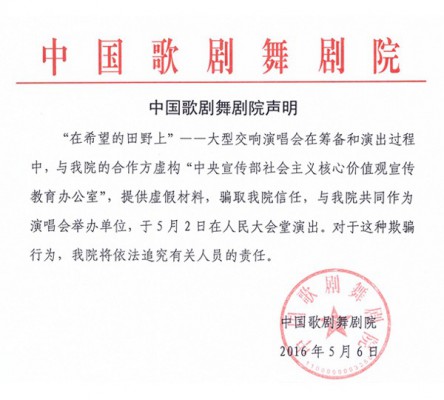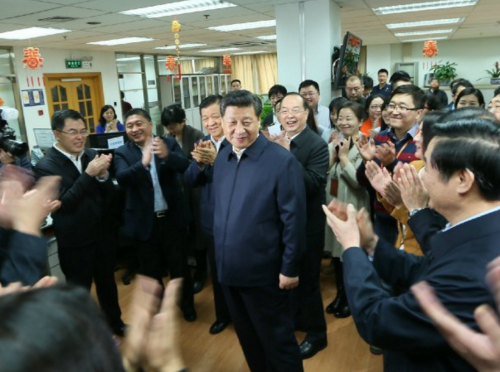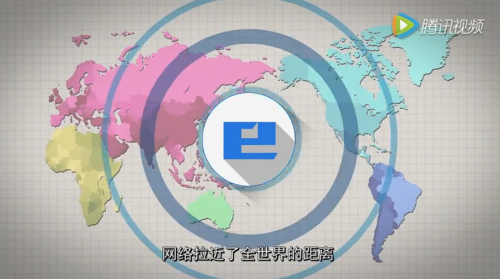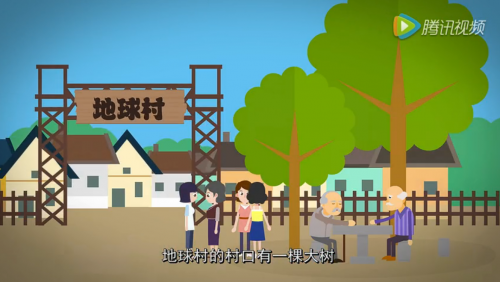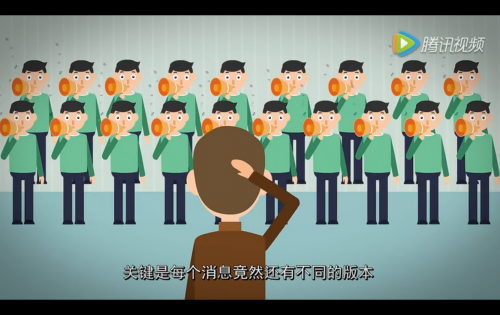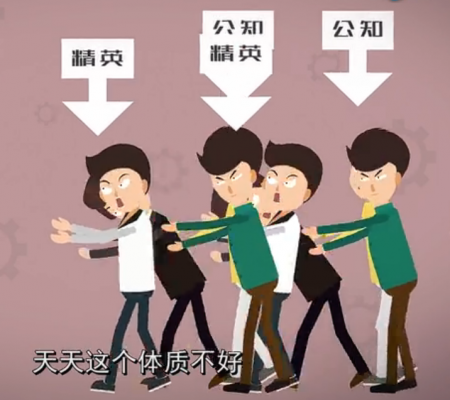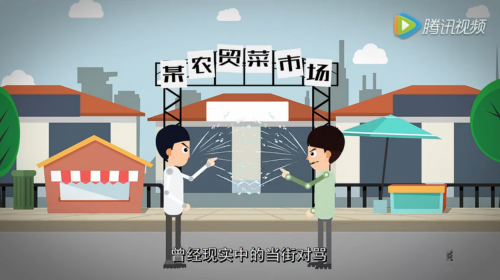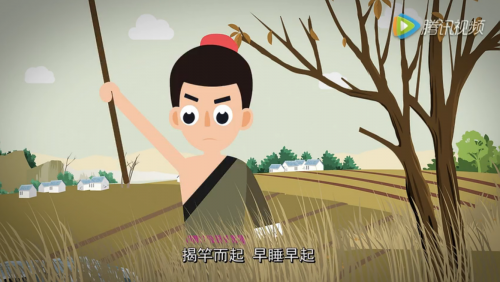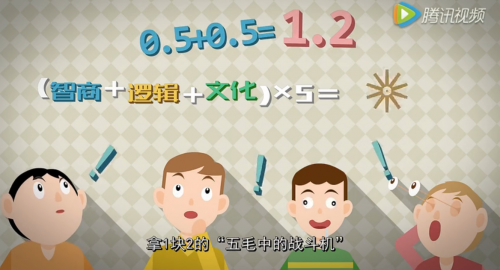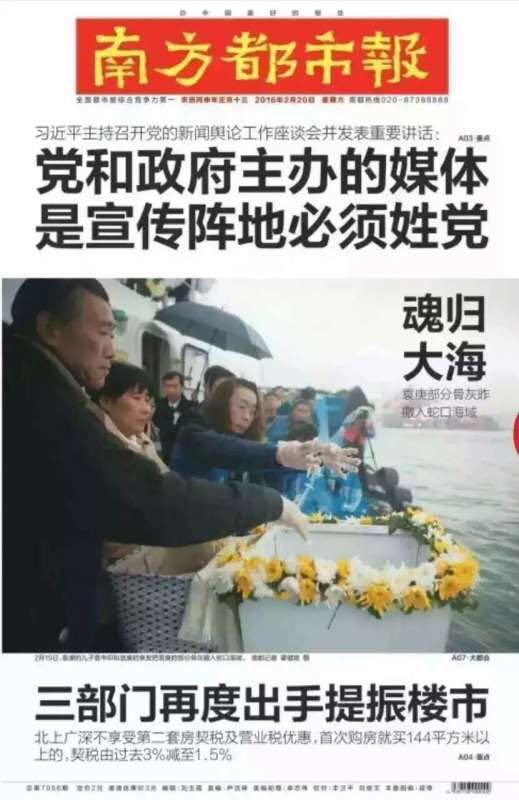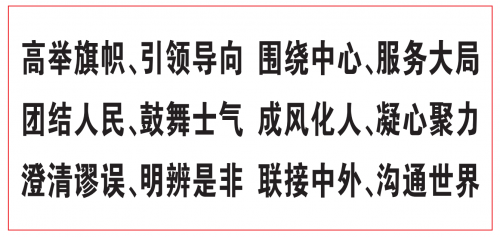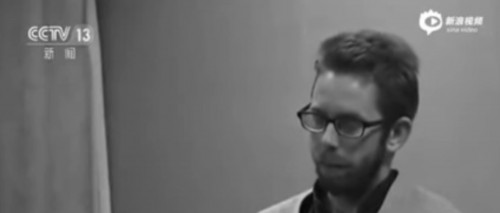It will take many months to unpack the implications of the new and comprehensive media policy Chinese President Xi Jinping outlined on February 19, and many more to understand and observe its real impact.
For the time being, we can rely on the various explications appearing in official state media to help cut shovel through the slush of official discourse. To that purpose, we present the following (roughly 75%) translation of a recent People’s Daily Online compilation of quotes from Xi Jinping’s various “important speeches” dealing with media policy since 2013.
The compilation, which is titled, “Xi Jinping’s View On News and Public Opinion,” is arranged according to category. There is a section on “the principle of Party character” — including the now very loudly touted notion that all media must be “surnamed Party” (必须姓党) — another on the importance of “correct guidance of public opinion” (the Jiang Zemin phrase equating media control and political control), still another on the role of the military press.
Perhaps the most colourful of Xi Jinping’s utterances in this collection is one under the section dealing with the need to “innovate” propaganda to suit a changing information environment. “Wherever the readers are, wherever the viewers are, that is where propaganda reports must extend their tentacles,” says China’s Kraken-in-Chief, “and that is where we find the focal point and end point of propaganda and ideology work.”
“Xi Jinping’s View On News and Public Opinion”
People’s Daily Online / February 25, 2016
Raise high the banner (高举旗帜) [of Marxism-Leninism], direct [proper] guidance (引领导向) [of public opinion], focus on the central tasks (围绕中心”) [of the Party], unite the people (团结人民), encourage high morale (鼓舞士气), spread public morals (成风化人), create cohesion (凝心聚力), clear up fallacies (澄清谬误), distinguish between truth and falsehood (明辨是非), join China and the outside (联接中外), connect with the world (沟通世界).
A new turning point is upon us. February 19, 2016, was an important day that all people in the media will remember. That morning, General Secretary Xi Jinping made inspection visits to three central-level news units, the People’s Daily, Xinhua News Agency and China Central Television; in the afternoon, he hosted the Party’s news and public opinion work conference, delivering an important speech.
At the conference, the general secretary addressed his “theory of responsibility and mission” (职责使命论) for the Party’s news and public opinion work under the conditions of the new era. He introduced a 48-character [formula of] “mission and responsibility for the Party’s news and public opinion work” (党的新闻舆论工作职责使命), clearly outlining basic instructions to apply for news and public opinion work.
The general secretary places great priority on news and public opinion work. On August 19, 2013, at the national work conference on propaganda and ideology, he gave an important speech in which he emphasised that “the internet is the priority of priorities” (网络是重中之重); On August 18, 2014, at the fourth conference of the Central Leading Group for Comprehensively Deepening Reforms, the general secretary gave an important speech on the integrated development of traditional media and emerging media.
Aside from these [dates], when visiting the People’s Liberation Army Daily (December 25, 2015), at the opening ceremony of the 2nd Wuzhen Summit (December 16, 2015), at the first meeting of the Office of the Central Leading Group of Cyberspace Affairs (February 27, 2014) and on other occasions, the general secretary focussed during his speeches on issues relating to news and public opinion.
Today, we have organised Xi Jinping’s remarks related to news and public opinion since the 18th National Congress of the CCP. These remarks not only make clear the “mission and responsibility” [of the media], and emphasise the “principle of the Party character” (党性原则) [of the media], but also [deal with] a series of questions, such as how to accommodate profound changes to the media landscape (媒体格局) and the public opinion ecology (舆论生态), how to deal with the profound changes brought on by new media, and how to better transmit China’s voice in an international public opinion ecology in which “the West is strong while China is weak” (西强我弱), offering pertinent solutions.
The “press view” (新闻观) and “methodology” (方法论) expounded by the general secretary arouses not only those in the media, but also holds lessons for those in other lines of work.
On the Principle of Party Character (谈党性原则)
*The Party’s news and propaganda work is a major matter for national governance and national peace and stability (党的新闻舆论工作是治国理政、定国安邦的大事)
The Party’s news and public opinion work is an important work matter for the Party, a major matter for national governance and national peace and stability. [The Party and the media] must grasp their position [and role] with the overall work of the Party as the point of departure, and accommodating situational developments domestically and internationally; [They must] adhere to the leadership of the Party, adhere to correct political orientation, adhere to a work guidance of people at the core, respect the principles of news and communication, innovate their methods, and effectively improve the propagation force (传播力), guiding capacity (引导力), influence (影响力) and credibility (公信力) of the Party’s news and public opinion. — February 19, 2016, Speech to the Party’s News and Public Opinion Work Conference
*The principle media of the central Party breath as one with the Party and the people, and progress with the times. (中央主要媒体与党和人民同呼吸, 与时代共进步)
For a long time, the principle media of the central Party have breathed as one with the Party and the people, and progressed with the times, actively propagating the principles of Marxism, propagating the positions of the Party, reflecting the opinions of the masses, serving an extremely important role during various historical periods of revolutionary construction and reform.— February 19, 2016, Speech to the Party’s News and Public Opinion Work Conference
*The proper exercise of the Party’s news and public opinion work concerns our banner and our path. (做好党的新闻舆论工作,事关旗帜和道路)
The proper exercise of the Party’s news and public opinion work concerns our banner and our path; concerns the implementation of the Party’s theory, political line and policies; concerns the smooth progress of the various endeavours of the Party and the government; concerns the cohesion and team spirit of the various peoples across the nation; concerns the prospects and destiny of the Party and the nation. [We] must have a grasp of news and public opinion work from the point of view of the overall work of the Party, giving it high priority in our thinking and being precise and forceful in our work. — February 19, 2016, Speech to the Party’s News and Public Opinion Work Conference
*The mission and responsibility of the Party’s news and public opinion work (党的新闻舆论工作的职责和使命)
Under the new conditions of our era, the mission and responsibility of the Party’s news and public opinion work is to: raise high the banner (高举旗帜) [of Marxism-Leninism], direct [proper] guidance (引领导向) [of public opinion], focus on the central tasks (围绕中心) [of the Party], unite the people (团结人民), encourage high morale (鼓舞士气), spread public morals (成风化人), create cohesion (凝心聚力), clear up fallacies (澄清谬误), distinguish between truth and falsehood (明辨是非), join China and the outside (联接中外), connect with the world (沟通世界). [The media] must take on this mission and responsibility, [and they] must place political orientation (政治方向) before all else, firmly adhering to the principle of the Party nature [of the media], firmly adhering to the Marxist View of Journalism (马克思主义新闻观), firmly adhering to correct guidance of public opinion (正确舆论导向), and firmly adhering to an emphasis on positive propaganda (正面宣传为主). — February 19, 2016, Speech to the Party’s News and Public Opinion Work Conference
*[The media] must uphold the Party’s leadership of news and public opinion work (要坚持党对新闻舆论工作的领导)
The Party’s news and public opinion work must adhere to the principle of the Party character, cleaving fundamentally to the Party’s leadership of news and public opinion work. Media run by the Party and government are propaganda positions of the Party and the government, and they must reflect the Party (必须姓党) [lit., “be surnamed Party”]. All work of the Party’s news and public opinion media must reflect (体现) the will of the Party, mirror (反映) the views of the Party, preserve the authority of the Party, preserve the unity of the Party, and achieve love of the Party, protection of the Party and acting for the Party (爱党、护党、为党); they must all increase their consciousness of falling in line, maintaining a high level of uniformity (高度一致) with the Party in ideology, politics and action. All must uphold the unity of the Party character and people character (党性和人民性相统一), ensuring that the Party’s theories and policies become conscious actions among the masses, reflecting the experiences of the masses and the real situation facing them in a timely manner, enriching the spiritual world of the people [NOTE: this refers to such cultural life and entertainment], and enhancing the people’s spiritual strength. — February 19, 2016, Speech to the Party’s News and Public Opinion Work Conference
*The Party nature of the military press (军报姓党) must be upheld in the proper operation of the People’s Liberation Army Daily
The Party nature of the military press (军报姓党) must be upheld in the proper operation of the People’s Liberation Army Daily under the new situation [NOTE: The reference translated “Party nature” here is literally “the military press must be surnamed Party”.] The People’s Liberation Army Daily is led and controlled by the Party, directly serves the people’s army under the leadership of the Party, and it must uphold the highest standards and strictest demands in cleaving to the principle of the Party character. [The paper] must unshakeably support the Party’s absolute leadership of the military, must be unswerving in maintaining a high level of unity with the central Party in ideology, politics and action, must conscientiously protect the authority of the central Party and the Central Military Commission, and must unswervingly propagate the voice of the central Party and the Central Military Commission. This is the political spirit the People’s Liberation Army Daily must preserve, and this must never at any moment be forgotten or discarded. The military press are surnamed Party, and they must love the Party, protect the Party and serve the Party (爱党、护党、为党), making every effort to consolidate and strengthen the mainstream public opinion so that the views of the Party become the dominant voice. — December 25, 2015, Important Speech During a Visit to the People’s Liberation Army Daily
[Upholding the] Party nature of the military press (军报姓党), with a strong army as the base and innovation as the task
[The military press] must closely follow the strong-nation strong-army course, upholding the spirit of reform and innovation, adhering to the Party character of the military press (lit. “military press surnamed Party”), adhering to a strong military as the base and adhering to innovation as the task, working to ensure that the People’s Liberation Army daily is stronger in terms of its politics, stronger in terms of its transmission [capacity], stronger in terms of its influence, and ensuring there is strong ideological and public opinion support for the Chinese dream and the dream of a strong military. — December 25, 2015, Important Speech During a Visit to the People’s Liberation Army Daily
*The People’s Liberation Army Daily is the Party’s mouthpiece within the military
Founded on January 1, 1956, the People’s Liberation Army Daily is the official organ of the Party’s Central Military Commission, an important battle position of our Party’s and our military’s propaganda and ideology work, and also a special character of the Party’s leadership of the military. Over the past 60 years, the People’s Liberation Army Daily has drawn breath with the Party and the people, sharing their fate, in step with national security and military building . . . . — December 25, 2015, Important Speech During a Visit to the People’s Liberation Army Daily
. . . .
*Ideological work is a task of extreme importance for the Party
Economic construction is the core work of the Party, ideological work is a task of extreme importance for the Party. — February 19–20, 2016, Speech to the Party’s News and Public Opinion Work Conference
On Guidance of Public Opinion (谈舆论导向)
*Singing the main theme, transmitting positive energy (唱响主旋律,传播正能量)
Since the 18th National Congress of the CCP, the principal media of the central Party have emphasised propaganda surrounding the spirit of the 18th National Congress, and of the Third, Fourth and Fifth Plenums, explaining the important decisions and work plan of the central Party, reflecting the great experiences and spirit of the people, singing the main theme [of the Party], transmitting positive energy (传播了正能量), and energetically stirring the great force of the entire Party, entire nation and all the people toward the realisation of the Chinese dream of the great rejuvenation of the Chinese people. — February 19, 2016, Speech to the Party’s News and Public Opinion Work Conference
*Unity, stability and encouragement, and emphasising positive propaganda (团结稳定鼓劲、正面宣传为主)
Unity, stability and encouragement, and emphasising positive propaganda — these are basic policies that must be followed in the Party’s news and public opinion work. In doing a proper job of positive propaganda, [we must] increase the attractiveness and infectiveness [of media products]. — February 19, 2016, Speech to the Party’s News and Public Opinion Work Conference
*In all aspects and at all stages, we must adhere to the correct guidance of public opinion (各个方面、各个环节都要坚持正确舆论导向)
In the various aspects and stages of news and public opinion work, [we must] adhere to the correct guidance of public opinion. Party newspapers and journals at various levels, and television and radio stations all must abide by correct guidance (讲导向), and all metropolitan newspapers and magazines (都市类报刊) and new media must also abide by correct guidance. News reports must abide by correct guidance, and supplements, special programs, advertising and publicity must also abide by correct guidance; current affairs news must abide by correct guidance, and entertainment and social forms of the news must also abide by correct guidance; domestic news reports must abide by correct guidance, and international news reports must also abide by correct guidance. — February 19, 2016, Speech to the Party’s News and Public Opinion Work Conference
*Deriving spiritual strength and the “zero point indicator” from the People’s Daily (从人民日报里寻找精神力量和“定盘星”)
The People’s Daily is the Party’s battle position. Back in the early days comrade Mao Zedong himself wrote the name of the People’s Daily. The whole Party and the whole nation derive their spiritual strength and their “zero point indicator” from the People’s Daily. In adapting to change and continuing to strengthen, the most critical thing is to not forget our original intentions, and to remain firm in our beliefs; we must hold our news and public opinion position, and we must advance with the times. I hope everyone always works steadily for new goals. The central Party supports you, and I also support you. — February 19, 2016, Speech to the Party’s News and Public Opinion Work Conference
*Online public opinion and propaganda must uphold the main theme (网络舆论宣传要弘扬主旋律)
Doing a proper job of online public opinion work is a long-term task, and we must innovate and advance online propaganda, using the principles of Internet communication, upholding the main theme, inciting positive energy (激发正能量), actively cultivating and putting into practice socialist core values, having a good grasp of timeliness, intensity and effect in online public opinion channeling, ensuring a clear and bright online space. — February 27, 2014, Important Speech to the First Meeting of the Office of the Central Leading Group for Cyberspace Affairs
*Mainstream ideology and public opinion must be adhered to, consolidated and expanded (必须坚持巩固壮大主流思想舆论)
Unity, stability and encouragement, and emphasising positive propaganda — these are basic policies that must be followed in the Party’s news and public opinion work. We are now in the midst of a great struggle (伟大斗争) with many new historical characteristics, and the challenges and difficulties we face are unprecedented; [We] must adhere to, consolidate and expand mainstream ideology and public opinion, promoting the main theme, transmitting positive energy (传播正能量), and inciting the great strength of unity and advancement throughout the entire society. Most critical is to raise the level and quality [of propaganda], properly grasping the timeliness, intensity and effect, raising attractiveness and infectiveness, so that the masses enjoy watching and listening, so that resonance is created, fully using positive propaganda to boost morale and motivate the people. — February 19–20, 2016, Speech to the Party’s News and Public Opinion Work Conference
*Increasing the first-move advantage, grasping the initiative and striking the first blow (增强主动性、掌握主动权、打好主动仗)
On questions of truth and falsehood in terms of political principles, we must increase our first-move advantage (主动性), grasping the initiative (掌握主动权), striking the first blow (主动仗), helping cadres and the masses distinguish the line between truth and falsehood and clearing away ambiguities. — February 19–20, 2016, Speech to the Party’s News and Public Opinion Work Conference
On Innovation and Integration (谈创新融合)
Accelerating the construction of a new pattern of public opinion channeling (加快构建舆论引导新格局)
Along with situational developments, the Party’s news and public opinion work must innovate its concepts, content, types, forms, methods, means, operational approaches, systems and mechanisms, increasing its directionality and effectiveness. We must accommodate the trends of segmentation and differentiation, accelerating the building of a new pattern of public opinion channeling. — February 19–20, 2016, Speech to the Party’s News and Public Opinion Work Conference
Where the readers are, that is where propaganda reports must extend their tentacles (读者在哪里,宣传报道的触角就要伸向哪里)
To operate the People’s Liberation Army Daily properly under the new situation, we must persist in innovation as our task. Right now, the patterns of the media, the public opinion ecology, the media pattern, target audiences and communications technologies are undergoing profound change — and the Internet in particular is driving a transformation in the media sector such as we have never before seen. Wherever the readers are, wherever the viewers are, that is where propaganda reports must extend their tentacles, and that is where we find the focal point and end point of propaganda and ideology work. — December 25, 2015, Important Speech During a Visit to the People’s Liberation Army Daily
. . . . [FOUR QUOTES NOT TRANSLATED HERE] . . . .
On Professional Behaviour (谈专业素质)
* Media competition is most crucially about the competition for talent (媒体竞争关键是人才竞争)
Media competition is most crucially about the competition for talent, and the core advantage of the media lies in the talent advantage. [We] must accelerate the fostering and creation of a news and public opinion work corps that is politically resolute, capable and diligent, in whom the Party and the people can place their trust. News and public opinion workers must enhance their consciousness of [the fact that] politicians run the newspapers (政治家办报), and they must find the correct measure in surrounding the centre [of the Party leadership] and serving the overall situation, bearing in mind social responsibility, constantly answering the fundamental question of “who am I working for, who do I rely on and who am I?” . . . — February 19, 2016, Speech to the Party’s News and Public Opinion Work Conference
. . . . [ONE QUOTE NOT TRANSLATED HERE] . . . .
On International Transmission (谈国际传播)
Serving as a bridge and belt that creates mutual trust and unites strengths (做增信释疑、凝心聚力的桥梁纽带)
I hope that the 30th anniversary of the founding of the People’s Daily Overseas Edition is a starting point, that we can gather our experiences, utilise our advantages and work in a spirit of innovation, using methods that overseas readers enjoy and accept, and language that they can understand, to explain the China story, to transmit China’s voice, to work hard to become a bridge and belt to create mutual trust and unite strengths. — May 2015, Remarks to Commemorate the 30th Anniversary of the the People’s Daily Overseas Edition
*Transmitting Chinese culture, telling China’s story properly (传播中国文化,讲好中国故事)
[We must] use our international transmission platform well in order to objectively, truly and vividly report the situation with respect to China’s economic and social development, transmitting Chinese culture, telling China’s story properly, and promoting wider and better understanding of China in foreign countries. — February 19, 2016, Important Speech During a Visit to China Central Television
*Strengthening the building of our international transmission capacity, enhancing our international discourse power (加强国际传播能力建设,增强国际话语权)
[We] must strengthen the building of our international transmission capacity, and enhance our international discourse power, telling China’s story properly in a centralised manner. At the same time we must optimise our strategic deployments, working hard to create flagship media for external propaganda that have relatively strong international influence. — February 19, 2016, Speech to the Party’s News and Public Opinion Work Conference
. . . . [FOUR ENTRIES NOT TRANSLATED HERE] . . . .
